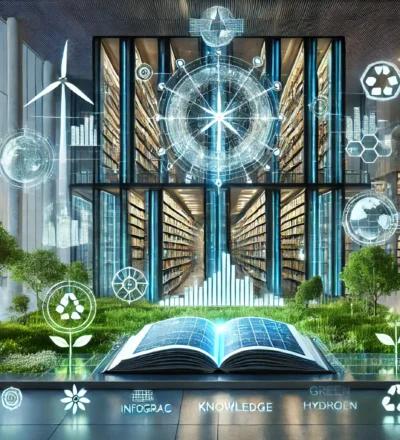At ISPT, we take great pride in our expertise on a sustainable industry. We believe that by sharing fact-based information, we accelerate the adoption of solutions across industries. This belief underpins our extensive online library, a wealth of freely accessible scientific reports, publications, and whitepapers. Built in collaboration with our partners and researchers, these resources ensure that innovative solutions and valuable knowledge are shared widely to drive progress.
The re-launch of our Knowledge Base last year provided a more prominent platform for our publications, reinforcing our commitment to knowledge dissemination. Since its introduction, the number of downloads for ISPT publications has more than doubled. Posts on LinkedIn featuring publications have also achieved remarkable engagement and reach among professionals in the field.
As 2024 concludes, we take a moment to spotlight the top 5 most downloaded publications of the year, each reflecting the cutting-edge developments driving sustainability in the industry forward.
1. Clean Ammonia Roadmap
📥 Download the Clean Ammonia Roadmap
This comprehensive roadmap outlines the potential of clean ammonia as an energy and hydrogen carrier. It explores projected demand and import scenarios in the ARRRA region (Antwerp-Rotterdam-Rhine-Ruhr Area) through 2050, examining safety measures, necessary policy adjustments, and infrastructure development. With a focus on market growth in sectors like shipping and energy generation, the report also analyses ammonia’s CO₂ reduction potential across various industries, underscoring its role in decarbonisation.
🎧 Prefer listening? Want an audio overview of this report? In this podcast, created with Google’s NotebookLM, you’ll be guided through its key points in 12:55 minutes.
2. Safety Aspects of Green Hydrogen Production
📥 Download the Safety Aspects of Green Hydrogen Production-report
This report examines the safety challenges of large-scale green hydrogen production, with a particular focus on explosion risks. It evaluates existing risk assessment methods and identifies knowledge gaps, particularly around ignition probabilities and explosion impacts involving hydrogen-oxygen mixtures. Two typical scenarios are explored: mixing within equipment and post-leakage mixing in enclosed spaces. The report concludes with recommendations for a unified risk assessment methodology and further standardisation.
🎧 Prefer listening? You can listen to the highlights of this report in a 21-minute podcast, created with Google’s NotebookLM.
3. Gigawatt-Scale Green Electrolyser Design
📥 Download the design for a Gigawatt-Scale Green Electrolyser
This report details an advanced design for a 1-gigawatt green hydrogen plant, developed to halve investment costs compared to a 2020 design. It highlights innovations in electrolyser technology, electrical systems, and process optimisation. Both alkaline and PEM electrolyser technologies are evaluated, with detailed cost analysis, technical specifications, and a modular design presented. The report outlines a path towards operational readiness by 2030, with success dependent on material availability and technological advancements.
🎧 Prefer listening? Dive into the essentials of this publication with our 16-minute podcast, generated by Google’s NotebookLM.
4. Solid Oxide Electrolyser (SOE) Technology
📥 Download the report on Next Level Solid Oxide Electrolysis Cells
This publication presents a feasibility study on the application of Solid Oxide Electrolysis Cells (SOEC) technology in three industrial scenarios at Air Liquide, BP, and OCI. The study evaluates process integration, scaling potential, and techno-economic aspects, focusing on efficiency and cost reductions. Recommendations for a pilot plant are included, alongside a roadmap for further development, highlighting the significant cost-saving potential of this promising technology.
🎧 Prefer listening? Catch up on this report in an 21-minute podcast, created with Google’s NotebookLM.
5. New Electrical Layouts for GW Hydrogen Plants
This feasibility study compares a conventional electrical layout with an innovative design using new converters to transmit DC power from offshore wind farms directly to electrolysers. The study analyses efficiency, harmonic emissions, costs, and other factors, demonstrating potential advantages in space and efficiency. However, the feasibility of the new design remains low, requiring further development. This collaborative report includes contributions from ISPT, Hitachi Energy, and other partners.
🎧 Prefer listening? Listen to this publication summarized in a 16-minute podcast, crafted using Google’s NotebookLM.
The remarkable engagement we’ve witnessed underscores the importance of sharing high-quality research and insights. Each of these publications not only informs but also empowers our stakeholders – whether they are process technologists, industry leaders, or policymakers – to take actionable steps towards a sustainable European future. We encourage you to explore and utilize these resources.
